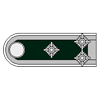I was thinking about doing this one a little different. We seem to get a few people on the site with basic to novice experience with model building, so I thought I would show some of the basics and tools that I use to build a model. I am going to build this kit out of the box, no aftermarket parts. But I must say, that with some Bronco, you really don't need the AM parts, especially with this kit, as it comes with some photo etched and a metal barrel.
So lets get building.
The Bronco Staghound is a real nice kit, well molded, very little flash, and as I mentioned above, comes with a few extra detail bits. I am not going to get into the actual accuracies of the kit versus an actual Canadian Staghound, I am building for the fun.
So first task is to study the instructions, get an idea of the steps required to build the kit. First thing I notice with the steps for this kit is the adding of detail to the sides before building the hull. For me, I am not a big fan of this approach, as I like to build the basic hull first. So I am going to deviate from the instructions a little.
So lets get the parts of the sprues. For the bigger parts I use a set of the smaller Xuron flush snips. I like the way they work, usually providing a clean cut with little left to sand.
Once the parts are off, time to clean up the cuts and any flash. I use a two sided sanding stick that I got at my local hobby shop, one side is rought 200 grit and the other 400 grit. Now for me, I tend to use them till there is almost nothing left, saves a little money. As you can see in the picture, the difference between one I have been using for some time and a new one.
Once I have the basic parts I need off, I dry fit the pieces to ensure they fit well and identify any areas that may be troublesome. I use a couple pieces of Tamiya tape to hold it together as I fit the pieces.
So there does not seem to be any major fit issues in the basic hull, so looks like I am ready to glue. But before I glue I will check the instructions again to ensure that I am not missing any parts that may require attention before these go together.
Next update, I will get into gluing the parts together. If you have any questions or comments, please let me know.




































